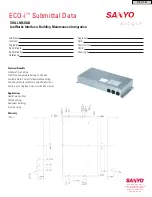
Configuring the Unit
DATAGRAM TYPE:
Datagram Type:
When selecting this option, you will be prompted for the Datagram type.
Enter
01
for directed or broadcast UDP.
When the UDP option is in effect, the unit will never attempt to initiate a TCP connection
because it will use UDP datagrams to send and receive data.
MODEM MODE:
Modem (Emulation) Mode:
In Modem Mode, the unit presents a modem interface to the
attached serial device. It accepts AT-style modem commands, and handles the modem
signals correctly.
Normally there is a modem connected to a local PC and a modem connected to a remote
machine. A user must dial from the local PC to the remote machine, accumulating phone
charges for each connection. Modem Mode allows you to replace modems with XPort™s,
and to use an Ethernet connection instead of a phone call, without having to change
communications applications and make potentially expensive phone calls.
To select Modem Mode, set the Connect Mode to
C6
(no echo),
D6
(echo with full verbose),
or
D7
(echo with 1-character response).
Note:
If the unit is in Modem Mode and the serial port is idle, the unit can still accept
network TCP connections to the serial port if Connect Mode is set to C6 (no echo), D6 (echo
with full verbose), or D7 (echo with 1-character response).
In Modem Mode, echo refers to the echo of all of the characters entered in command mode;
it does not mean to echo data that is transferred. Quiet Mode (without echo) refers to the
modem not sending an answer to the commands received (or displaying what was typed).
Full Verbose means the unit will echo modem commands and will respond to a command
with a message string shown on the following table:
Message
Meaning
OK
Command was executed without error.
CONNECT
A network connection has been established.
DISCONNECT
A network connection has been closed.
RING n.n.n.n.
A remote device, having IP address n.n.n.n, is connecting to this
device.
1-Character Response means the unit will echo modem commands and will respond to a
command with a single character response:
Message
Meaning
0 OK
1 Connected
2 Ring
3 No
Carrier
4 Error
Received commands must begin with the two-character sequence AT and must be
terminated with a carriage return character. Any character sequence received not starting
with AT will be ignored. The unit will only recognize and process single AT-style commands.
Compound AT commands shall be treated as unrecognized commands.
If the Full Verbose option is in effect, an unrecognized command string that is otherwise
formatted correctly (begins with AT and ends with carriage return) will be responded to with
the OK message and no further action will be taken.
XPort™ User Manual and Development Kit
4-17















































